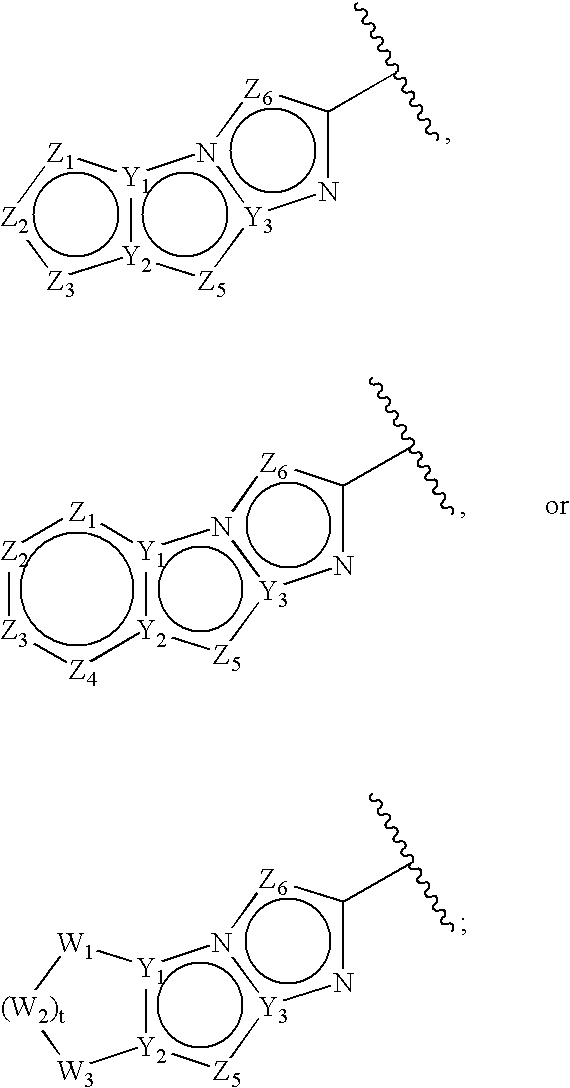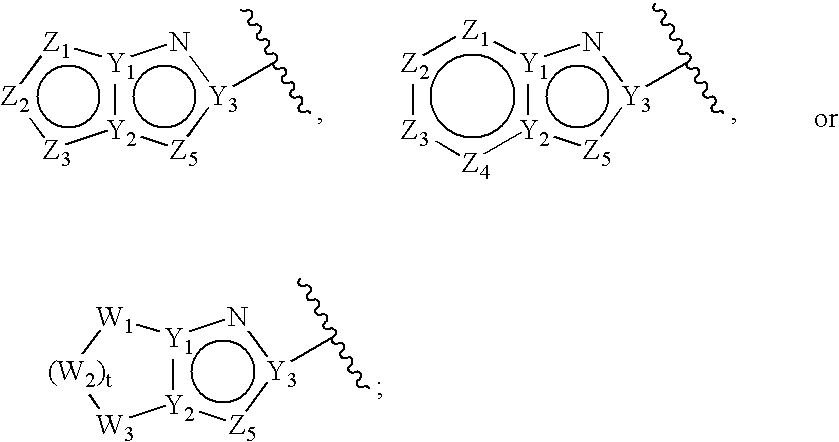Process for preparing beta-lactamase inhibitors
a technology of beta-lactamase and process, which is applied in the field of process for preparing beta-lactamase inhibitors, can solve the problems of compound ineffectiveness against class-c producing organisms, damage to the effective treatment of bacterial infections, and loss of antibacterial activity
- Summary
- Abstract
- Description
- Claims
- Application Information
AI Technical Summary
Benefits of technology
Problems solved by technology
Method used
Image
Examples
example 1
[0320]
[0321] 6,7-Dihydro-5H-cyclopenta[d]imidazo[2,1-b]thiazole-2-carbaldehyde (1): A solution of 5,6-dihydro-4H-cyclopentathiazol-2-ylamine (2) (200 g free base, 1.43 mol) in 2-propanol (1 L) was added over 30 minutes to a stirred, cooled (0-5° C.) suspension of bromopyruvaldehyde dimethylacetal 3 (530 g, 2.75 mol), sodium bicarbonate (55 g, 0.66 mol), and 2-propanol (0.30 L). The mixture was allowed to stir for 16 h. The mixture was warmed to 40° C. for 8 h, and was concentrated under reduced pressure to provide a red residue. The red residue was added to methyl t-butyl ether (2.0 L). The mixture was stirred for a minimum of 1 h. The solid was collected by filtration and washed with Et2O. The dried solid (550 g) was dissolved in methylene chloride (2.75 L). The methylene chloride mixture was passed through a pad of silica gel (1.65 kg). The pad was washed with methylene chloride and 10% EtOAc / methylene chloride. The filtrate was concentrated to a yellow solid, which was triturated...
example 2
[0322]
[0323] 3-Bromo-1,1-dimethoxy-propan-2-one (3): Pyruvaldehyde dimethylacetal (1,1-dimethoxy-propan-2-one ) (400 g, 3.39 mol) and 5% (v / v) methanol / acetonitrile (2.0 L) were combined and cooled to 1H NMR (CDCl3) δ 4.73 (1H, s), 4.21 (2H, s), 3.45 (6H, s).
example 3
[0324]
[0325] 5,6-Dihydro-4H-cyclopentathiazol-2-ylamine (2), HBr salt: A solution of bromine (256 g, 1.6 mol) and acetonitrile (144 mL) was added at a rate of 11 mL / min to a cooled (ice / water bath), stirred solution of cyclopentanone (150 g, 1.78 mol), methanol (75 mL), and acetonitrile (1.425 L). The reaction mixture was allowed to stir at room temperature overnight. The reaction mixture was clarified by filtration and concentrated under reduced pressure to 542 g. The residue was diluted with 2-propanol (750 mL) and thiourea (102 g, 1.34 mol) was added. The mixture was warmed to reflux (72° C.) for 2 h. The mixture was allowed to stir for 16 h at room temperature to complete precipitation of the product, which was then collected by filtration and dried in vacuo to give the title compound as the hydrobromide salt (90.1 g, 31%). 1H NMR (CD3OD) δ 4.88 (2H, s), 2.75-2.70 (2H, m), 2.60-2.55 (2H, m), 2.39-2.33 (2H, m).
PUM
| Property | Measurement | Unit |
|---|---|---|
| v/v | aaaaa | aaaaa |
| v/v | aaaaa | aaaaa |
| temperature | aaaaa | aaaaa |
Abstract
Description
Claims
Application Information
 Login to View More
Login to View More - R&D
- Intellectual Property
- Life Sciences
- Materials
- Tech Scout
- Unparalleled Data Quality
- Higher Quality Content
- 60% Fewer Hallucinations
Browse by: Latest US Patents, China's latest patents, Technical Efficacy Thesaurus, Application Domain, Technology Topic, Popular Technical Reports.
© 2025 PatSnap. All rights reserved.Legal|Privacy policy|Modern Slavery Act Transparency Statement|Sitemap|About US| Contact US: help@patsnap.com



